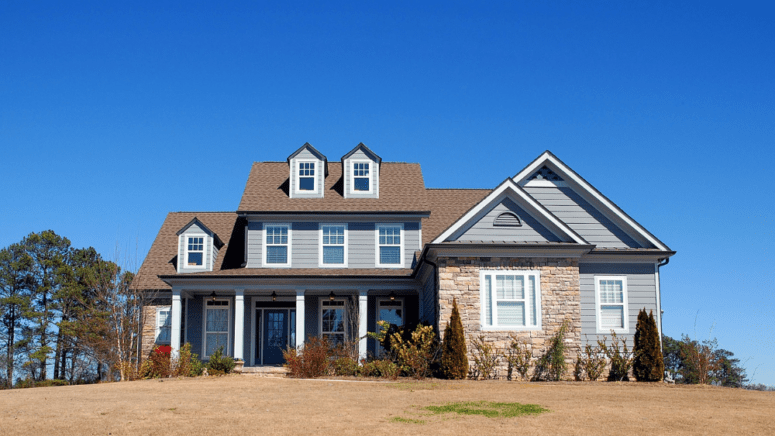
 A house with non-conforming mortgage loan" width="775" height="436" />
A house with non-conforming mortgage loan" width="775" height="436" />
Richard Haddad is the executive editor of HomeLight.com. He works with an experienced content team that oversees the company’s blog featuring in-depth articles about the home buying and selling process, homeownership news, home care and design tips, and related real estate trends. Previously, he served as an editor and content producer for World Company, Gannett, and Western News & Info, where he also served as news director and director of internet operations.
When buying a home, mortgages fall under one of two classifications — conforming and non-conforming loans. Most Americans financing a house will typically use a conforming loan, which means it “conforms” to guidelines that allow the loans to be sold to Fannie Mae or Freddie Mac, two of the largest mortgage buyers in the country.
But what circumstances might lead your mortgage to fall into the non-conforming loan category?
In this post, we answer the question: What is a non-conforming loan when buying a home, and how might it impact your purchase?
How Much Is Your Home Worth Now?
Home values have rapidly increased in recent years. How much is your current home worth now? Get a ballpark estimate from HomeLight’s free Home Value Estimator.
A non-conforming mortgage loan stands apart from the crowd of standard financing options. It doesn’t adhere to the guidelines set by Fannie Mae and Freddie Mac, the government-sponsored entities (GSEs) that buy and securitize mortgages. This divergence mainly revolves around the loan amount, but other factors like the borrower’s credit score, debt-to-income ratio, and the property type can also play a part.
Because they exceed the conforming loan limits or differ in underwriting standards, non-conforming loans offer flexibility for borrowers who don’t fit into the conventional loan box. This includes those looking to purchase high-value properties or who have unique financial situations.
A conventional loan is any mortgage loan that is not insured or guaranteed by the government (such as under FHA, VA, or USDA loan programs). Conventional loans can be conforming or non-conforming.
Not all conventional loans are conforming loans. For example, jumbo loans are conventional, but they don’t conform to the limits set by the Federal Housing Finance Agency (FHFA) or the criteria established by Fannie Mae and Freddie Mac.
Non-conforming loans work by providing an alternative financing route for borrowers who need more than what conventional loans offer. Lenders who issue non-conforming loans are typically more flexible with their lending criteria, allowing for higher loan amounts and accommodating borrowers with varied credit histories and income types.
This flexibility, however, comes with a trade-off. Since non-conforming loans represent a higher risk to lenders, borrowers can expect higher costs. The exact terms will depend on the lender, the borrower’s financial situation, and the type of non-conforming loan.
| Non-conforming loans | Conforming loans |
| Cannot be sold by a bank or lender to Freddie Mac or Fannie Mae (GSEs) | Can be sold to Fannie Mae or Freddie Mac (GSEs) |
| Typically are more expensive | Typically are less expensive |
| A less common mortgage loan | A more common mortgage loan |
| More flexible eligibility requirements | Tougher eligibility requirements |
| Can offer options, but may need at or above 20% down payment for jumbo loans | More flexible down payment options |
| No official limits on mortgage loan size | In most areas, limited to $766,550 (up to $1,149,825 in designated high-cost areas)* |
GSE = government-sponsored enterprises, *2024 FHFA conforming loan limits
For 2024, the conforming loan limits have been set to accommodate rising home prices across the country. The baseline limit is $766,550 for most areas, with high-cost areas seeing limits up to $1,149,825. These limits reflect the maximum loan amount Fannie Mae and Freddie Mac will purchase, ensuring borrowers in varying markets can find suitable conforming loan options.


Non-conforming loans serve a variety of purposes, catering to borrowers who find themselves outside the conforming loan framework. They are particularly useful for:
Non-conforming mortgage loans come in various shapes and sizes, each designed to meet the unique needs of different borrowers. Here are some common examples:
These loans are insured by the federal government, making them less risky for lenders and often more accessible for borrowers.
Specifically designed for purchasing high-priced luxury homes, jumbo loans exceed the conforming loan limits set by Fannie Mae and Freddie Mac.
There are also other types of non-conforming loans tailored to specific borrower situations:
Non-conforming loans are typically most helpful for people who fall on two different sides of the buyer pool. Home shoppers looking for more expensive houses can benefit from non-conforming loans through a jumbo mortgage. Conversely, lower-income, military, or rural buyers seeking to use a government-backed loan program (VA, USDA, or FHA) may find lending solutions in a non-conforming mortgage.
Deciding on a non-conforming loan ultimately hinges on your specific financial situation, the type of property you’re aiming to purchase, and your long-term financial goals. For most typical home purchases, a conforming loan is usually sufficient.
However, if you’re looking to borrow a large amount of money, such as a jumbo loan, or you need a special government-backed mortgage, a non-conforming loan could be your key to homeownership.
Consider the pros and cons carefully and think about your ability to meet the loan’s terms over time. Consulting with a financial advisor, top real estate agent, or mortgage specialist can also provide personalized insights to guide your decision.
Header Image Source: (Pixabay/paulbr75)
At HomeLight, our vision is a world where every real estate transaction is simple, certain, and satisfying. Therefore, we promote strict editorial integrity in each of our posts.
Richard Haddad is the executive editor of HomeLight.com. He works with an experienced content team that oversees the company’s blog featuring in-depth articles about the home buying and selling process, homeownership news, home care and design tips, and related real estate trends. Previously, he served as an editor and content producer for World Company, Gannett, and Western News & Info, where he also served as news director and director of internet operations.
Share this post